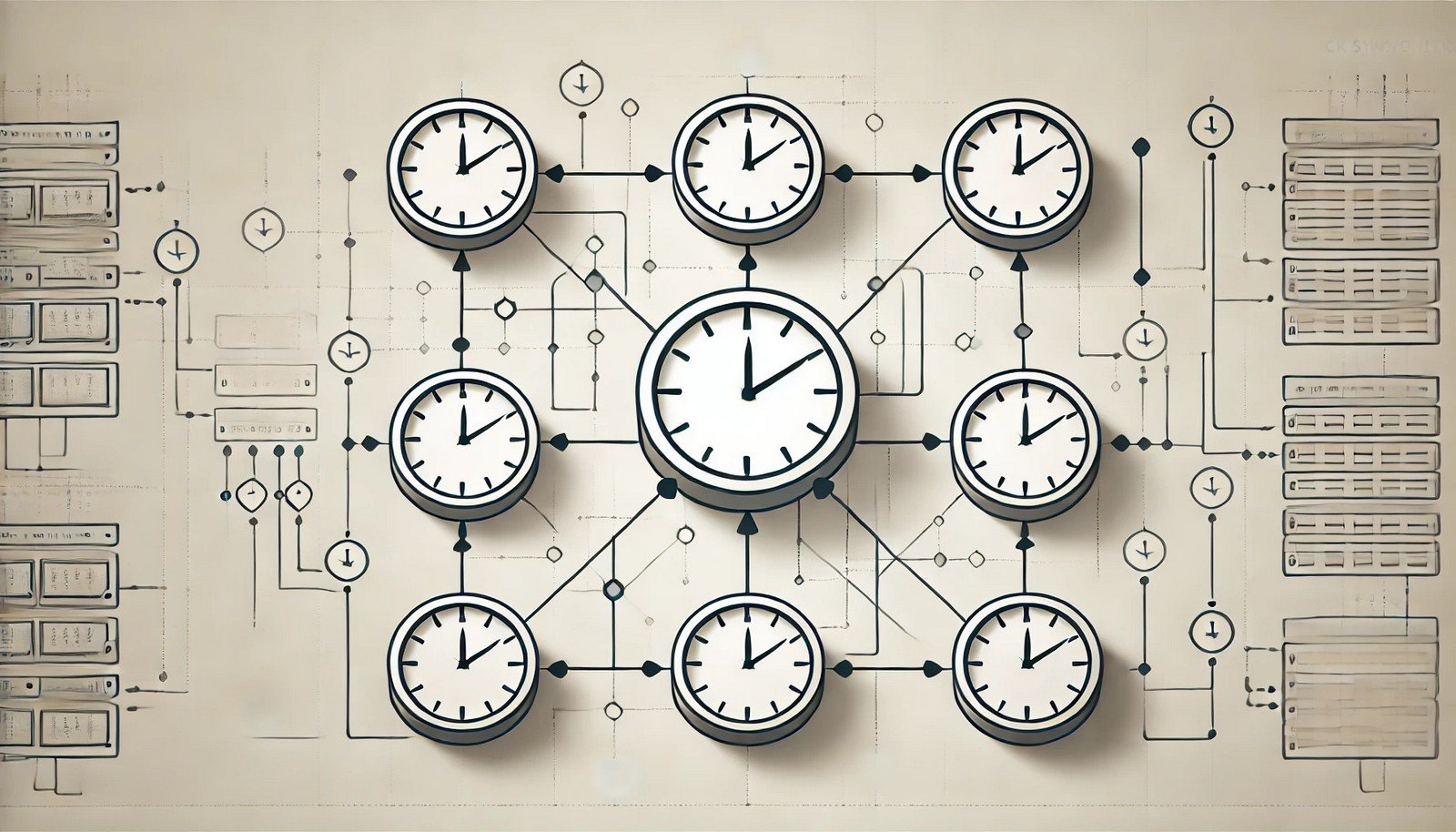Clock Synchronization
 (Representational Image | Source: Dall-E)
(Representational Image | Source: Dall-E)
Quick Navigation:
- Clock Synchronization Definition
- Clock Synchronization Explained Easy
- Clock Synchronization Origin
- Clock Synchronization Etymology
- Clock Synchronization Usage Trends
- Clock Synchronization Usage
- Clock Synchronization Examples in Context
- Clock Synchronization FAQ
- Clock Synchronization Related Words
Clock Synchronization Definition
Clock synchronization is the process of ensuring that multiple clocks in a network or system maintain the same time. In computing, it is crucial for coordinating distributed systems, data consistency, and security protocols. Methods such as the Network Time Protocol (NTP) and Precision Time Protocol (PTP) are commonly used for high-precision synchronization. Without clock synchronization, issues like data corruption, transaction inconsistencies, and security vulnerabilities can arise.
Clock Synchronization Explained Easy
Imagine you're playing an online game with friends. If everyone’s clock is slightly different, one person might see an event before another does, leading to confusion. Clock synchronization makes sure all clocks are set to the same time, so everything happens in the right order.
Clock Synchronization Origin
Clock synchronization became essential with the rise of distributed computing in the 20th century. The need to align time across different machines emerged in early telecommunication networks and later became a fundamental requirement for computer networks and the internet.
Clock Synchronization Etymology
The term "clock synchronization" is derived from the Greek words sýn (together) and chrónos (time), meaning "to bring time together."
Clock Synchronization Usage Trends
In modern computing, clock synchronization is critical for technologies such as blockchain, financial trading systems, cloud computing, and GPS. As systems become more distributed, the demand for highly precise time synchronization continues to rise.
Clock Synchronization Usage
- Formal/Technical Tagging:
- Distributed Systems
- Network Time Protocol (NTP)
- Precision Time Protocol (PTP)
- Real-time Computing - Typical Collocations:
- "clock synchronization in distributed systems"
- "high-precision clock synchronization"
- "network time synchronization"
- "synchronization protocols for computing"
Clock Synchronization Examples in Context
- Financial markets rely on precise clock synchronization to timestamp trades accurately.
- Cloud computing systems use synchronization to maintain consistency across distributed databases.
- GPS satellites need synchronized clocks to ensure accurate location tracking.
Clock Synchronization FAQ
- Why is clock synchronization important in computing?
It ensures that distributed systems function correctly, preventing data inconsistencies and errors. - What are common protocols used for clock synchronization?
NTP (Network Time Protocol) and PTP (Precision Time Protocol) are widely used. - How does NTP work?
NTP synchronizes clocks over a network by adjusting time differences between devices and reference clocks. - What happens if clocks are not synchronized?
It can cause data corruption, transaction errors, and security vulnerabilities. - How accurate is PTP compared to NTP?
PTP provides microsecond-level accuracy, whereas NTP is accurate to milliseconds. - Why is clock synchronization critical in financial transactions?
It ensures accurate timestamps for trading, preventing fraud and regulatory violations. - How does GPS use clock synchronization?
GPS satellites synchronize their clocks to provide precise location data. - Can software-based synchronization achieve perfect accuracy?
No, factors like network latency can introduce slight deviations. - What industries depend heavily on clock synchronization?
Finance, telecommunications, cloud computing, and aerospace. - What challenges exist in maintaining accurate clock synchronization?
Network delays, hardware limitations, and external interferences.
Clock Synchronization Related Words
- Categories/Topics:
- Distributed Computing
- Time Synchronization Protocols
- Real-time Systems
Did you know?
In high-frequency trading, a few milliseconds of difference in clock synchronization can result in millions of dollars in profit or loss. This has led financial institutions to invest heavily in ultra-precise time synchronization solutions.
PicDictionary.com is an online dictionary in pictures. If you have questions or suggestions, please reach out to us on WhatsApp or Twitter.Authors | Arjun Vishnu | @ArjunAndVishnu

I am Vishnu. I like AI, Linux, Single Board Computers, and Cloud Computing. I create the web & video content, and I also write for popular websites.
My younger brother, Arjun handles image & video editing. Together, we run a YouTube Channel that's focused on reviewing gadgets and explaining technology.



Comments powered by CComment